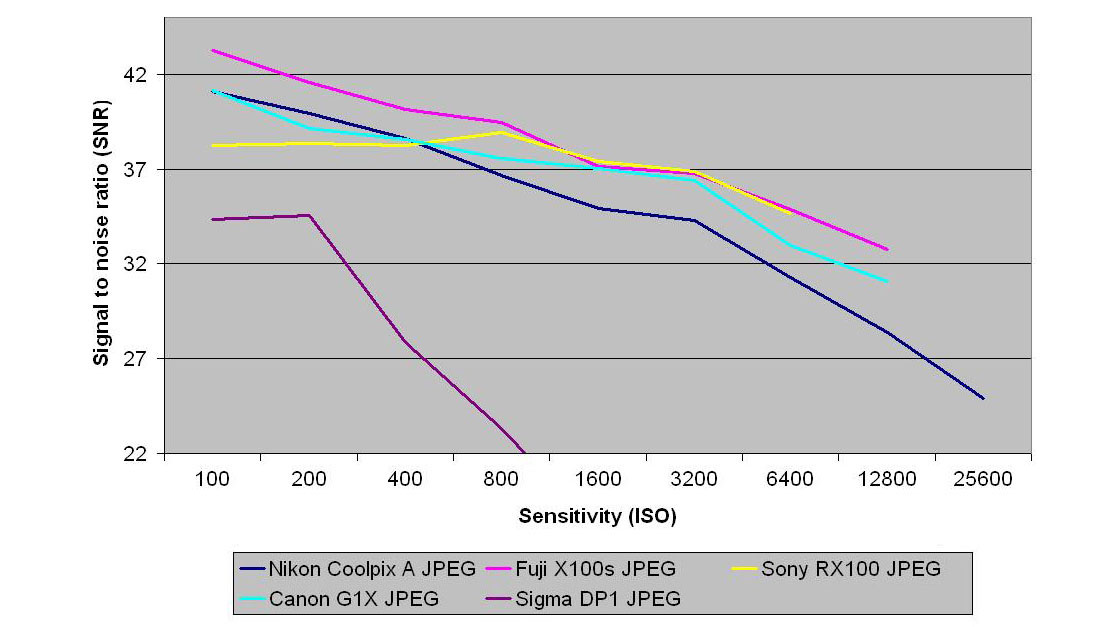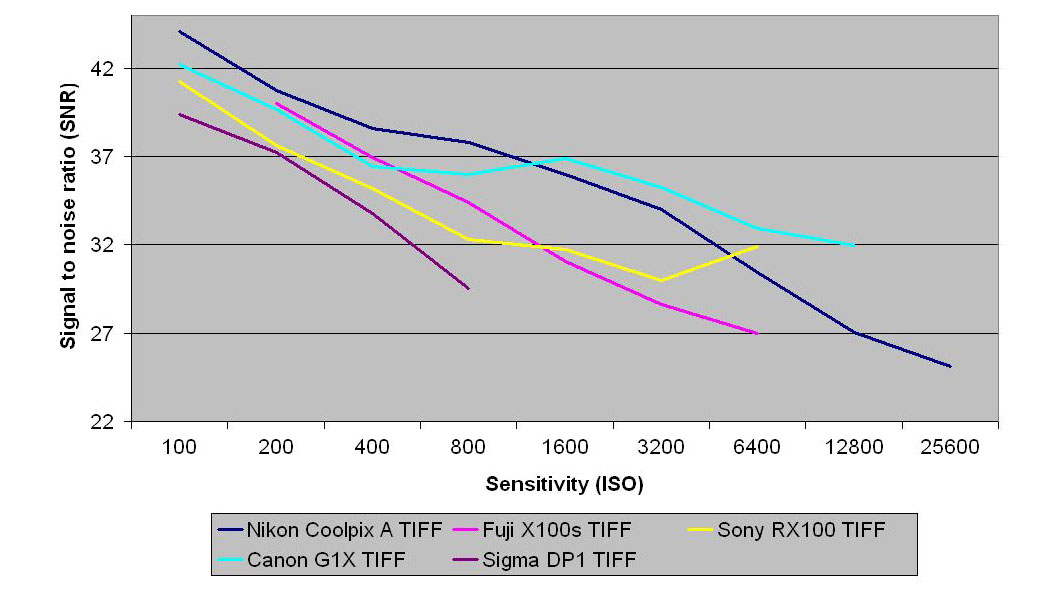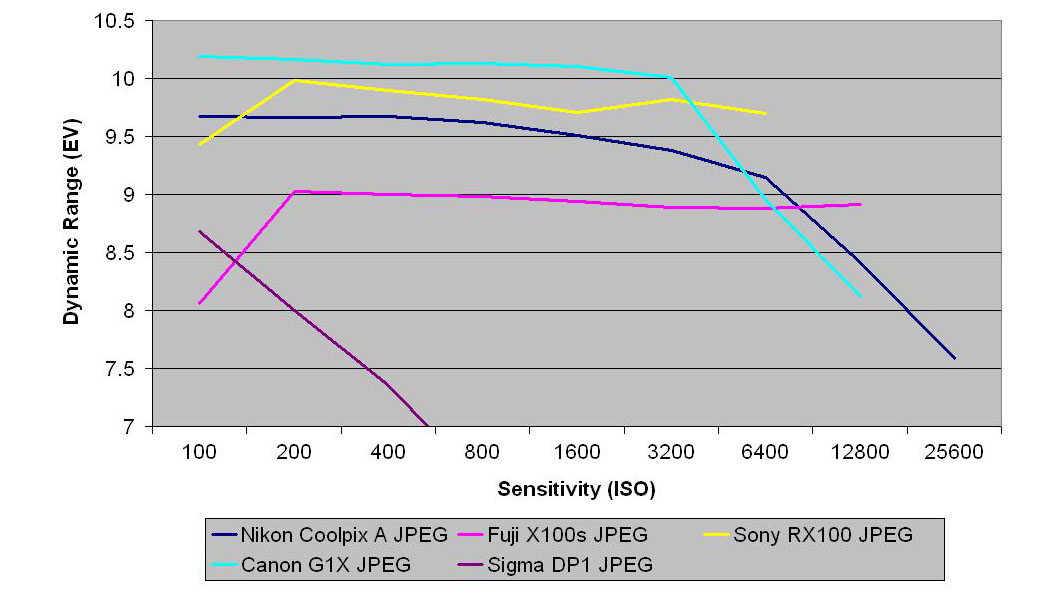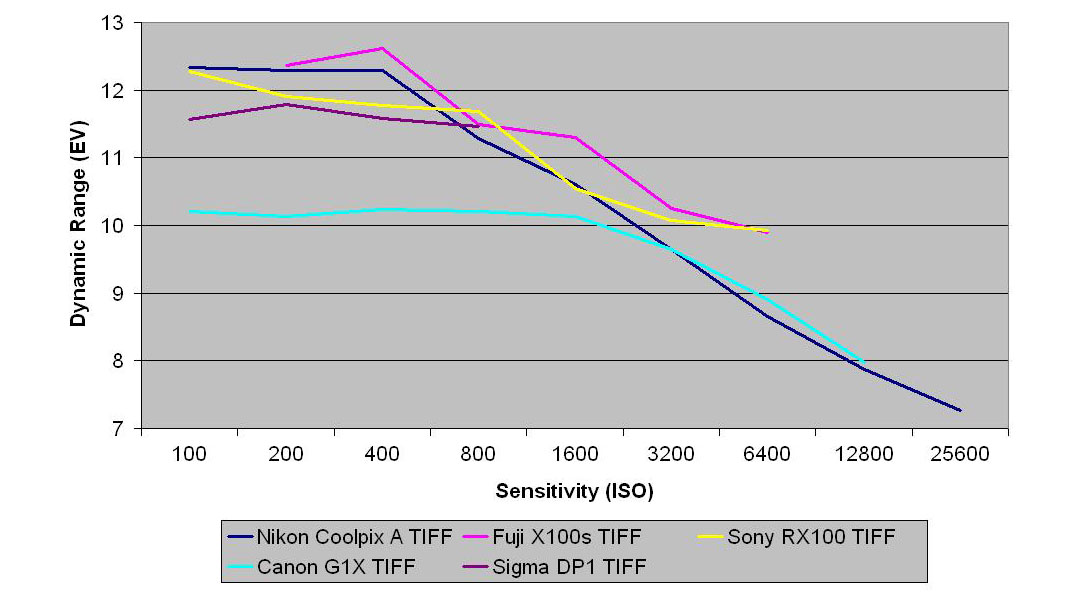Why you can trust TechRadar
We shoot a specially designed chart in carefully controlled conditions and the resulting images are analysed using DXO Analyzer software to generate the data to produce the graphs below.
A high signal to noise ratio (SNR) indicates a cleaner and better quality image.
For more more details on how to interpret our test data, check out our full explanation of our noise and dynamic range tests.
Here we compare the Nikon Coolpix A with the Canon G1 X, Fuji X100S, Sigma DP1 and Sony RX100.
JPEG signal to noise ratio

This chart shows that the Nikon Coolpix A's JPEG files have a more impressive signal to noise ratio than those from the Canon G1 X and Sony RX100 at lower sensitivities, but fall behind after ISO 400. They beat those from the Sigma DP1 at every ISO setting, but sit below the Fuji X100S throughout the sensitivity range. The Nikon is the only camera in this group to go right up to ISO 25600, too.
Raw signal to noise ratio

Signal to noise ratios of the TIFF images (after conversion from raw) from the Nikon Coolpix A are much more impressive, sitting above the Fuji X100S and Sigma DP1 throughout the sensitivity range, and sitting at the top of the pile until ISO 1600, when the Canon G1 X's TIFF images overtake the Nikon A's. The Nikon A's TIFFs beat those from the Sony RX100 at every sensitivity but ISO 6400.
JPEG dynamic range

JPEG results for dynamic range show the Nikon Coolpix A sitting in the middle of this group of cameras, again above the Sigma DP1 for the whole sensitivity range, and above the Fuji X100S at every sensitivity but ISO 12800. The Nikon A's JPEGs show greater dynamic range than the Sony RX100's at ISO 100, but at higher sensitivities the Sony is more impressive. The Canon G1 X's results start off at the top of the group, above the Nikon A's, but drop off sharply at higher sensitivities, falling behind the Nikon's at ISO 6400 and 12800.
Raw dynamic range

This chart indicates that TIFF images (after conversion from raw) from the Nikon Coolpix A produce images with similar dynamic range to the other cameras here. At lower sensitivities, the Nikon A's TIFFs show greater dynamic range than the Canon G1 X's, but at ISO 3200 and above the two cameras produce almost identical results. The Nikon A's images are slightly stronger than the Sigma DP1 and Sony RX100's at ISO 100-400, but at ISo 800 and above this is reversed. The Fuji X100S's TIFF images consistently show slightly greater dynamic range than the Nikon's throughout the range.
Current page: Noise and dynamic range
Prev Page Image quality and resolution Next Page Sample images